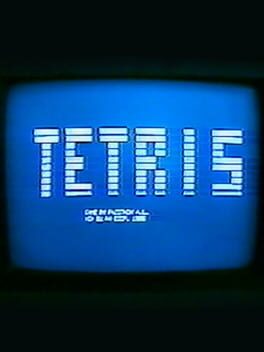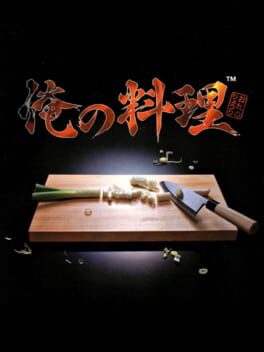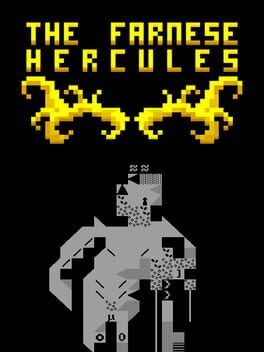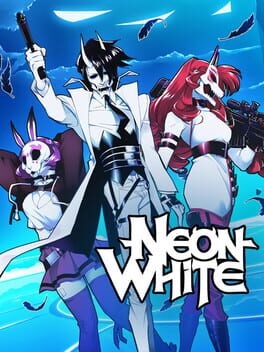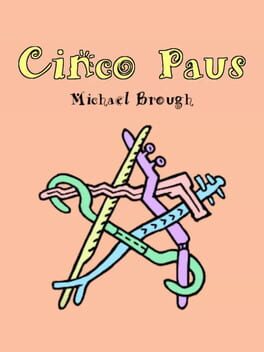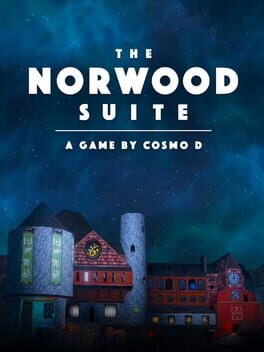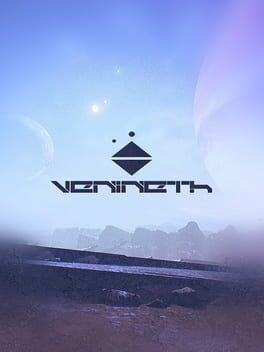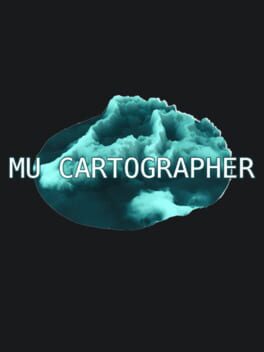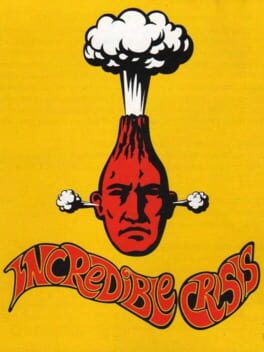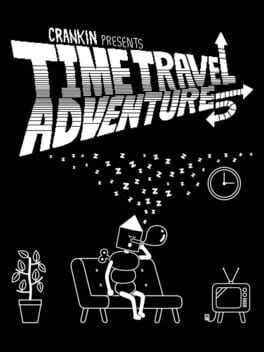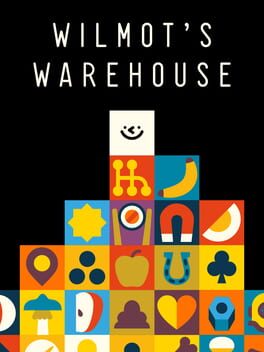Detchibe
BACKER
1984
It's rather telling that this ur-Tetris operates with the same mechanical elegance as its progeny. I find the consideration of Tetris - and indeed, any game - as a 'perfect game' to be trite, but from the outset Alexey Pajitnov demonstrated with aplomb that Tetris is a perfect idea. The reiteration of gameplay systems necessarily precludes Tetris from an actualised perfection -- who can judge which of its 322+ official releases is 'definitive'?
Yet, with hundreds of versions each expanding on that which came before, one would expect the very first title to be lacking most of what allowed Tetris to be a success. The Electronika 60 release is a monochrome textscape without even the barest flourishes of the Game Boy version. The shrill piezoelectric beeper's pathetic tones are an auditory agony; the ubiquitous whine of the cathode ray tube a tinnital torment. There is no bag randomiser. There is no hold. Rotation is clockwise-only. No T-spins, no back-to-backs, no combos, no garbage, no ghost. One next piece is shown. Surprisingly the hard drop is present, despite its omission from subsequent versions until 2001's Tetris Worlds.
It all matters not. In a cacophony of noise befitting a Ryoji Ikeda installation, I am dealt five Z-pieces in a row. The inconsistent speed increments befuddle me, catching me off-guard. How characters are rendered makes it difficult to consider my board's layout. I am in love. This scant realisation feels pure. I am entranced by it. It is all I have ever needed and wanted.
Yet, with hundreds of versions each expanding on that which came before, one would expect the very first title to be lacking most of what allowed Tetris to be a success. The Electronika 60 release is a monochrome textscape without even the barest flourishes of the Game Boy version. The shrill piezoelectric beeper's pathetic tones are an auditory agony; the ubiquitous whine of the cathode ray tube a tinnital torment. There is no bag randomiser. There is no hold. Rotation is clockwise-only. No T-spins, no back-to-backs, no combos, no garbage, no ghost. One next piece is shown. Surprisingly the hard drop is present, despite its omission from subsequent versions until 2001's Tetris Worlds.
It all matters not. In a cacophony of noise befitting a Ryoji Ikeda installation, I am dealt five Z-pieces in a row. The inconsistent speed increments befuddle me, catching me off-guard. How characters are rendered makes it difficult to consider my board's layout. I am in love. This scant realisation feels pure. I am entranced by it. It is all I have ever needed and wanted.
1999
Anyone with an understanding of my gaming tastes will know I heavily value:
(1) Games with novel control schemes
(2) Games which were 'firsts'
(3) Games which are obscure
(4) Games with chores
(5) Games with cooking
Ore no Ryouri is a pitch-perfect example of all the above. The cherry on top is that it is simple enough to work despite a glaring language barrier.
From the outset, Ore no Ryouri operates as an alternate take on Ape Escape's intent for the DualShock. The analog stick-centric gameplay highlights the possibilities afforded by the DualShock as a more direct and intuitive mode of player action. Whereas Ape Escape demonstrated movement alongside use of a tool, Ore no Ryouri opts for effectively mapping each arm/hand to a stick. When preparing soft serve ice cream, one stick controls the flow, the other swirls the cone. Pouring a beer involves tipping the glass and pulling the tap. Cutting means moving your stabilising hand in conjunction with your chops. Shaping a patty has your hands moving in tandem. Of course, not every kitchen task is an ambidextrous affair; ladling, salting, sauteing, etc. are done one handed. The act of turning on a fryer or burner is a simple button.
Ore no Ryouri doesn't needlessly complicate its gameplay for the sake of complexity. If anything, it seeks to reduce the involvement required for kitchen tasks. When multiples of the same ticket item are ready for frying, for example, they all get placed in the fryer at once. Pouring condiments is much the same, as is pouring broth to finish a bowl of ramen. This reduces the anxiety of the balancing act as tickets run out their respective timers, but also allows for combos by completing batches of tickets at once. Five orders of fries are fried, salted, and served as one, racking up huge points and setting the player up for stage completion or success in a cook-off.
The chores are damn great as well. Smashing roaches, dialing a rotary phone, counting money, and scrubbing dishes are all clever uses of dual analog, the latter in particular striking my fancy. A very similar dish washing chore exists in another favourite franchise of mine, Cook, Serve, Delicious! The similarity was so incredible to me that I did some quick searching and found out Vertigo Gaming's earliest projects were flash remakes of Ore no Ryouri, eventually becoming the CSD series. The feeling of Ore no Ryouri being a proto-CSD is not mere coincidence, it is a delightful truth. The transition of dual analog to a keyboard and mouse setup (and later, controller support) was elegant for that series, but I am somewhat wistful as to what CSD could be if it adhered more strictly to Ore no Ryouri's maximalism of the DualShock. Thankfully, what footage we've seen thus far of Cook Serve Forever seems to suggest it is leaning more heavily into that deliberate control rather than typing gameplay. In that sense, Ore no Ryouri has accomplished that which I wanted from Ape Escape by influencing contemporary games decades after showcasing the possibilities of play and control.
Bon appétit!
(1) Games with novel control schemes
(2) Games which were 'firsts'
(3) Games which are obscure
(4) Games with chores
(5) Games with cooking
Ore no Ryouri is a pitch-perfect example of all the above. The cherry on top is that it is simple enough to work despite a glaring language barrier.
From the outset, Ore no Ryouri operates as an alternate take on Ape Escape's intent for the DualShock. The analog stick-centric gameplay highlights the possibilities afforded by the DualShock as a more direct and intuitive mode of player action. Whereas Ape Escape demonstrated movement alongside use of a tool, Ore no Ryouri opts for effectively mapping each arm/hand to a stick. When preparing soft serve ice cream, one stick controls the flow, the other swirls the cone. Pouring a beer involves tipping the glass and pulling the tap. Cutting means moving your stabilising hand in conjunction with your chops. Shaping a patty has your hands moving in tandem. Of course, not every kitchen task is an ambidextrous affair; ladling, salting, sauteing, etc. are done one handed. The act of turning on a fryer or burner is a simple button.
Ore no Ryouri doesn't needlessly complicate its gameplay for the sake of complexity. If anything, it seeks to reduce the involvement required for kitchen tasks. When multiples of the same ticket item are ready for frying, for example, they all get placed in the fryer at once. Pouring condiments is much the same, as is pouring broth to finish a bowl of ramen. This reduces the anxiety of the balancing act as tickets run out their respective timers, but also allows for combos by completing batches of tickets at once. Five orders of fries are fried, salted, and served as one, racking up huge points and setting the player up for stage completion or success in a cook-off.
The chores are damn great as well. Smashing roaches, dialing a rotary phone, counting money, and scrubbing dishes are all clever uses of dual analog, the latter in particular striking my fancy. A very similar dish washing chore exists in another favourite franchise of mine, Cook, Serve, Delicious! The similarity was so incredible to me that I did some quick searching and found out Vertigo Gaming's earliest projects were flash remakes of Ore no Ryouri, eventually becoming the CSD series. The feeling of Ore no Ryouri being a proto-CSD is not mere coincidence, it is a delightful truth. The transition of dual analog to a keyboard and mouse setup (and later, controller support) was elegant for that series, but I am somewhat wistful as to what CSD could be if it adhered more strictly to Ore no Ryouri's maximalism of the DualShock. Thankfully, what footage we've seen thus far of Cook Serve Forever seems to suggest it is leaning more heavily into that deliberate control rather than typing gameplay. In that sense, Ore no Ryouri has accomplished that which I wanted from Ape Escape by influencing contemporary games decades after showcasing the possibilities of play and control.
Bon appétit!
2018
The video game equivalent of a Jimmy Neutron brain blast.
The combined discographies of SOPHIE, Arca, Andy Stott, and Iglooghost infused with Gravity Rush amidst the geometries of Kairo, INTRAQUARTZ, and Uncut Gems' black opal sequences.
Not a wasted moment. Intense visuals and a thumping, reactive soundscape enshroud topsy-turvy platforming like the miasmatic decadence of Berghain. The dizzying speed of some sequences invokes free-fall in one's chair. No bullshit. Just the infinities of matter itself.
The combined discographies of SOPHIE, Arca, Andy Stott, and Iglooghost infused with Gravity Rush amidst the geometries of Kairo, INTRAQUARTZ, and Uncut Gems' black opal sequences.
Not a wasted moment. Intense visuals and a thumping, reactive soundscape enshroud topsy-turvy platforming like the miasmatic decadence of Berghain. The dizzying speed of some sequences invokes free-fall in one's chair. No bullshit. Just the infinities of matter itself.
2022
2022 has been a year of working with less for me. The first calendar year since my graduation with a Bachelor's of Arts in History and Art History, my time has been dedicated fully to histories outside prescribed academic bounds. The malaise of inaccessibility to my beloved archives and libraries for one full year, and sitting on a mountain of writing, research, and games literacy, compelled me in late May and early June to put considered effort into critical consumption of interactive media.
For years I had wanted to create something with my adoration for kusoge, to espouse the forgotten production history of alleged spyware, create something of a memoir for how over a decade of my life was spent, put into words the ineffability of why immersive art cannot be immersive, impart hazy childhood memories of my first engagement with high art games, speak to queer reclamation of digital ghost towns, praise the creativity of independent development in the early 2010s, weep for the loss of Earth, denounce the horrors of eroguro and Japanese military fetishisation, comment on the shameless thievery of early games histories, lambaste games which ooze dopamine undeservedly, correct popular misconceptions of how things came to be, wax poetic about what big data has afforded us, demonstrate the anguish of unknowable truths, speak truthfully of the sacrosanct, share the increasingly erased, and argue for the importance of subtraction.
I have longed to manifest this creativity into a concrete something. The ideas were there, an unhewn slab of stone, monolithic and imposing.
It would be naive to argue whether or not a desire to be among the critical minds of Backloggd, and games writing more broadly, operated as a key driving force for me in this pursuit. Certainly it spurred me on, and the site's presence as a concentrated tour-de-force of outsider New Games Journalism made it a perfect fit. Putting myself out there with a contextualised discussion of Ape Escape and the critical regionalism of games and their hardware, and thereafter seeing that warmly welcomed and appreciated convinced me those ideas, bottled up for so long, were worthy of being poured from my cruet into a communal chalice.
To do away with poetics for a moment, it felt good. I had shared these thoughts in tight-knit friend groups, but of course my friends would say my arguments are sound, they're my friends. The same happened during my undergrad. My proofreading comrades certainly would not say to my face my argument is poor. Seeing my professors' eyes light up at a proposal meant so much more. Their pleas that I submit my work for publication left me dazed in delight. Their imploring that I go into grad school made me well up. The same has happened here. It is one thing to be told by those close to you that you have done well. It is another entirely for a stranger, with nothing to lose, nothing to gain, to tell you the same.
In the wake of Ape Escape, I began a multi-pronged approach to my writing. Part of me wanted to do those dormant thoughts justice. Part of me wanted to pursue analysis of obscura, lest it be forgotten as so much queer history has and had been during my undergrad.
In text I found refuge. I've not visited with my therapist for nearly a year as the static haze of a post-COVID-19 world left me in a limbo supported by Zoloft. Games, perhaps, could operate as a means to self-understanding and self-love. The act of writing was as much for the other as it was for me. It was self-validation.
In community I have felt a resurgence of drive. I remain warmed by those few laudatory comments when I posted the Ape Escape review in the Backloggd Discord. The humbled horror of Yultimona's list composed of their favourite reviews of mine. The touching consideration afforded me by Erato, Cone, Beach, Vee, Luna, and others when I bared my soul for Wrath of the Lich King. The explosion of acclaim for my tackling of Morimiya and 177. The acceptance given me that I have never felt I deserved. Even my silly game club idea has seen success thus far, despite numerous #DetchibeFlops.
It has been a short seven months since Ape Escape. A blip of time. Nonetheless, it has been a wonder to be present for it.
Thank you. Truly.
As the year draws to a final close, I have been similarly tickled by The Farnese Hercules.
"Io intendo scultura, quella che si fa per forza di levare."
[I mean sculpture, that which one does by means of removal.]
The history of humanity is a history of sculpture. Portable figures whittled from ivory, stone, and wood have been our companions longer than animals and fire. So too have we created art through the application of materials in painting, but this is a literal imprint on nature. The subtractive force of sculpture demonstrates the imposition of human force and desire into matter, rather than onto it. If painting is an additive construction, sculpture is a deliberate violence enacted onto an object. Clay wrenched from the soil, bone torn from the dead, wax stolen from the biosphere, marble hacked, wood uprooted, bronze turned molten. The material itself is acquired through action, and it is manipulated in the selfsame manner, obliterating it into unrecognisability from its unmolested state.
The likes of Michelangelo considered sculpture to be an act of freeing art from within an object. Surrounding material was superfluous, detracting from a physical realisation of universal forms. The Farnese Hercules applies that subtractive notion to the puzzle genre, inverting the logical tropes of nonograms in favour of an alogical approach.
The necessary solid nature of sculptable material makes a full understanding of three-dimensional realisation oblique from the outset. Gazing upon a block of matter might impart the idea that a figure can be crafted through reduction, but it is a continuous process of re-evaluation of the medium physically and conceptually. The Farnese Hercules takes this into consideration by limiting the player's gaze into the material to three blocks or until their view is interrupted by already hewn material. From the outset it appears as if it adheres to the logic of nonograms in requiring the player to deduce where blocks are to be excised, but in due time the player realises they can go after only sure-fire tracts of squares, and that this is the intended mode of play. That errors are labelled as faults instead of mistakes underscores this idea. Player errors are not a flawed application of logic, but the fault of the player on the whole. Their fault is proceeding without ensuring they are completely correct, in clicking too quickly or inaccurately. There is no moment of "how should I have known that," only "that was my fault."
Subtraction is not present only in the sculptural approach, however. Richard Sherriff has reduced the totality of the experience to bare elements. The Extended ASCII rendering suggests we need not extensive graphical prowess to impart the sensation of sculpture and art. The Farnese Hercules does not even need to exist as a contemporary creation; it would not be out of place as a ZZT-adjacent piece of software in the early 90s. Further still, works are quickly made of non-contiguous squares, showing depth through omission of blocks. With the Nefertiti Bust we realise the particulars of realisation are irrelevant, we need only grasp the essence of the work itself. Less truly becomes more, to the extent where so much is taken away without the end product being any worse for that subtraction. Jacob Epstein's Pieta is so bare in its presentation, yet it is undeniably honest to the original.
2022 has been a year of working with less for me. I have come to appreciate those most minimal of approaches.
Less is more.
2023 promises to be resplendent with possibility and potential. It is my goal to free the sculpture within its infinity.
For years I had wanted to create something with my adoration for kusoge, to espouse the forgotten production history of alleged spyware, create something of a memoir for how over a decade of my life was spent, put into words the ineffability of why immersive art cannot be immersive, impart hazy childhood memories of my first engagement with high art games, speak to queer reclamation of digital ghost towns, praise the creativity of independent development in the early 2010s, weep for the loss of Earth, denounce the horrors of eroguro and Japanese military fetishisation, comment on the shameless thievery of early games histories, lambaste games which ooze dopamine undeservedly, correct popular misconceptions of how things came to be, wax poetic about what big data has afforded us, demonstrate the anguish of unknowable truths, speak truthfully of the sacrosanct, share the increasingly erased, and argue for the importance of subtraction.
I have longed to manifest this creativity into a concrete something. The ideas were there, an unhewn slab of stone, monolithic and imposing.
It would be naive to argue whether or not a desire to be among the critical minds of Backloggd, and games writing more broadly, operated as a key driving force for me in this pursuit. Certainly it spurred me on, and the site's presence as a concentrated tour-de-force of outsider New Games Journalism made it a perfect fit. Putting myself out there with a contextualised discussion of Ape Escape and the critical regionalism of games and their hardware, and thereafter seeing that warmly welcomed and appreciated convinced me those ideas, bottled up for so long, were worthy of being poured from my cruet into a communal chalice.
To do away with poetics for a moment, it felt good. I had shared these thoughts in tight-knit friend groups, but of course my friends would say my arguments are sound, they're my friends. The same happened during my undergrad. My proofreading comrades certainly would not say to my face my argument is poor. Seeing my professors' eyes light up at a proposal meant so much more. Their pleas that I submit my work for publication left me dazed in delight. Their imploring that I go into grad school made me well up. The same has happened here. It is one thing to be told by those close to you that you have done well. It is another entirely for a stranger, with nothing to lose, nothing to gain, to tell you the same.
In the wake of Ape Escape, I began a multi-pronged approach to my writing. Part of me wanted to do those dormant thoughts justice. Part of me wanted to pursue analysis of obscura, lest it be forgotten as so much queer history has and had been during my undergrad.
In text I found refuge. I've not visited with my therapist for nearly a year as the static haze of a post-COVID-19 world left me in a limbo supported by Zoloft. Games, perhaps, could operate as a means to self-understanding and self-love. The act of writing was as much for the other as it was for me. It was self-validation.
In community I have felt a resurgence of drive. I remain warmed by those few laudatory comments when I posted the Ape Escape review in the Backloggd Discord. The humbled horror of Yultimona's list composed of their favourite reviews of mine. The touching consideration afforded me by Erato, Cone, Beach, Vee, Luna, and others when I bared my soul for Wrath of the Lich King. The explosion of acclaim for my tackling of Morimiya and 177. The acceptance given me that I have never felt I deserved. Even my silly game club idea has seen success thus far, despite numerous #DetchibeFlops.
It has been a short seven months since Ape Escape. A blip of time. Nonetheless, it has been a wonder to be present for it.
Thank you. Truly.
As the year draws to a final close, I have been similarly tickled by The Farnese Hercules.
"Io intendo scultura, quella che si fa per forza di levare."
[I mean sculpture, that which one does by means of removal.]
The history of humanity is a history of sculpture. Portable figures whittled from ivory, stone, and wood have been our companions longer than animals and fire. So too have we created art through the application of materials in painting, but this is a literal imprint on nature. The subtractive force of sculpture demonstrates the imposition of human force and desire into matter, rather than onto it. If painting is an additive construction, sculpture is a deliberate violence enacted onto an object. Clay wrenched from the soil, bone torn from the dead, wax stolen from the biosphere, marble hacked, wood uprooted, bronze turned molten. The material itself is acquired through action, and it is manipulated in the selfsame manner, obliterating it into unrecognisability from its unmolested state.
The likes of Michelangelo considered sculpture to be an act of freeing art from within an object. Surrounding material was superfluous, detracting from a physical realisation of universal forms. The Farnese Hercules applies that subtractive notion to the puzzle genre, inverting the logical tropes of nonograms in favour of an alogical approach.
The necessary solid nature of sculptable material makes a full understanding of three-dimensional realisation oblique from the outset. Gazing upon a block of matter might impart the idea that a figure can be crafted through reduction, but it is a continuous process of re-evaluation of the medium physically and conceptually. The Farnese Hercules takes this into consideration by limiting the player's gaze into the material to three blocks or until their view is interrupted by already hewn material. From the outset it appears as if it adheres to the logic of nonograms in requiring the player to deduce where blocks are to be excised, but in due time the player realises they can go after only sure-fire tracts of squares, and that this is the intended mode of play. That errors are labelled as faults instead of mistakes underscores this idea. Player errors are not a flawed application of logic, but the fault of the player on the whole. Their fault is proceeding without ensuring they are completely correct, in clicking too quickly or inaccurately. There is no moment of "how should I have known that," only "that was my fault."
Subtraction is not present only in the sculptural approach, however. Richard Sherriff has reduced the totality of the experience to bare elements. The Extended ASCII rendering suggests we need not extensive graphical prowess to impart the sensation of sculpture and art. The Farnese Hercules does not even need to exist as a contemporary creation; it would not be out of place as a ZZT-adjacent piece of software in the early 90s. Further still, works are quickly made of non-contiguous squares, showing depth through omission of blocks. With the Nefertiti Bust we realise the particulars of realisation are irrelevant, we need only grasp the essence of the work itself. Less truly becomes more, to the extent where so much is taken away without the end product being any worse for that subtraction. Jacob Epstein's Pieta is so bare in its presentation, yet it is undeniably honest to the original.
2022 has been a year of working with less for me. I have come to appreciate those most minimal of approaches.
Less is more.
2023 promises to be resplendent with possibility and potential. It is my goal to free the sculpture within its infinity.
A very rough introduction to Klonoa.
As an early WonderSwan title, and Namco's first game on the system, I admittedly didn't expect too much. The core platforming is passable, and the alteration of Klonoa's gameplay to fit a smaller-scale, action puzzle romp works surprisingly well (though I have no knowledge of what changes were actually made to that end). Getting the moonshards to finish each level is straight forward, with increasingly difficult puzzles required to get all the dream shards in a level for 100%.
There is an apparent attempt at replicating the graphical fidelity of the first PlayStation title, with the level/graphic designers assuring fans they worked hard to that end. Despite those efforts, the backgrounds blur together in such a way that, during actual play, the parallax effects are not noticed or registered even subconsciously. Foreground elements are detailed and make good use of the eight tones of grey, but their size on an already minuscule screen leads to a great deal of remembering level layouts, particularly when juggling crates across an entire section. One of the developers allegedly proposed shrinking Klonoa's (and presumably all other) sprites to accommodate the fact some levels were made for TATE play. Those TATE levels are an interesting feature in theory, but those stages rarely take advantage of that focus on verticality. If anything, they are more frustrating due to limited horizontal screen real estate mixed with lateral challenges.
The misunderstanding of the hardware continues with the sound. Afforded only four audio channels and a dreadfully tinny speaker, Hiromi Shibano and Junko Ozawa wanted to ensure Klonoa's iconic "Wahoo!" would be reproduced. It is a valiant effort on Ozawa's part in particular, with the digitised speech coming through fairly clearly, but the constant yelping detracts from the already stifled music and sound design as every possibly resource is thrown at Klonoa's voice. On top of that, what music can be heard is innocuous at first, but agonising when heard non-stop for all six stages of a world. And that is in an ideal scenario, wherein the player has access to the WonderSwan's headphone adapter accessory. The puny speaker has the potential to output genuinely good sound, but everything clashes harshly in Moonlight Museum.
From what I've read, the Game Boy Advance entries are a marked improvement. With a greater understanding of the WonderSwan's peculiarities following Namco's other releases on the platform (as well as the later addition of colour) there was considerable potential for Klonoa to be great on WonderSwan. However, he was given no second chance here, effectively using the WonderSwan as he would an enemy, discarding it to reach a higher level.
As an early WonderSwan title, and Namco's first game on the system, I admittedly didn't expect too much. The core platforming is passable, and the alteration of Klonoa's gameplay to fit a smaller-scale, action puzzle romp works surprisingly well (though I have no knowledge of what changes were actually made to that end). Getting the moonshards to finish each level is straight forward, with increasingly difficult puzzles required to get all the dream shards in a level for 100%.
There is an apparent attempt at replicating the graphical fidelity of the first PlayStation title, with the level/graphic designers assuring fans they worked hard to that end. Despite those efforts, the backgrounds blur together in such a way that, during actual play, the parallax effects are not noticed or registered even subconsciously. Foreground elements are detailed and make good use of the eight tones of grey, but their size on an already minuscule screen leads to a great deal of remembering level layouts, particularly when juggling crates across an entire section. One of the developers allegedly proposed shrinking Klonoa's (and presumably all other) sprites to accommodate the fact some levels were made for TATE play. Those TATE levels are an interesting feature in theory, but those stages rarely take advantage of that focus on verticality. If anything, they are more frustrating due to limited horizontal screen real estate mixed with lateral challenges.
The misunderstanding of the hardware continues with the sound. Afforded only four audio channels and a dreadfully tinny speaker, Hiromi Shibano and Junko Ozawa wanted to ensure Klonoa's iconic "Wahoo!" would be reproduced. It is a valiant effort on Ozawa's part in particular, with the digitised speech coming through fairly clearly, but the constant yelping detracts from the already stifled music and sound design as every possibly resource is thrown at Klonoa's voice. On top of that, what music can be heard is innocuous at first, but agonising when heard non-stop for all six stages of a world. And that is in an ideal scenario, wherein the player has access to the WonderSwan's headphone adapter accessory. The puny speaker has the potential to output genuinely good sound, but everything clashes harshly in Moonlight Museum.
From what I've read, the Game Boy Advance entries are a marked improvement. With a greater understanding of the WonderSwan's peculiarities following Namco's other releases on the platform (as well as the later addition of colour) there was considerable potential for Klonoa to be great on WonderSwan. However, he was given no second chance here, effectively using the WonderSwan as he would an enemy, discarding it to reach a higher level.
2022
Astonished at how much I enjoyed this considering the disdain it has harboured from many whose opinions I hold in very high regard. Its eschewing of Sans-Serif Corpo committee-design in favour of a maximal exploration of bombastic and obtuse peculiarities from the aesthetic to the mechanical warms my heart. The sincerity on display strikes a chord of 'cringe' within me less because of its actual writing content, and more because it is a contemporary parallel to the endearing, honest, whimsical edgelordiness of video games past. Neon White is the Shadow the Hedgehog, The Bouncer, Vexx, Prince of Persia: Warrior Within, Bomberman Act Zero, Dante's Inferno, Jak II, BMX XXX of the 2020s in tone, spit and polished to a shine. It forgoes the failings of mid-2000s muddy and ruddiness, where landscapes and gameplay blended into green-brown smears, and proudly proclaims that games can be capital-C cool and fun as hell. Every skip is the descendant of Ulillillia's Spyro oddities. The soundtrack is the vague memories of Ape Escape and ChainDive, the vibe the immaculate remembrance of youth. It is Lovely Planet with accuracy replaced with speed, speed, speed.
Neon White is unabashedly itself, for good and for ill.
Neon White is unabashedly itself, for good and for ill.
2017
I'm a huge proponent of games which do more with less, so it's little wonder I adore Michael Brough and his design philosophy. He is a gem of the TIGSource-era indie scene who believes above all else that games are about making choices. Always making choices. His brand of roguelikes, endearingly referred to as Broughlikes, embody this ethos well, be they designed by Brough himself, or his ardent supporters. Their most important features are:
Small play areas
Zugzwang (compulsion to move)
Singular control (moving is identical to acting)
Predictable randomisation
Maximal exploration of a singular element of roguelikes
This foundation is an immediate and apparent departure from the prototypical roguelike experience, wherein boards can be very large, their spaces ultimately uninteresting, where players can freely wait for an advantage in combat, where actions are discrete from one another, where random elements can make the totality of the experience feel dependent on luck. That notion of luck is superficially present in Broughlikes as well, but only due to a lack of understanding fundamentals of their design.
As detailed in his dev notes, Broughlikes have each tackled different elements of Rogue[-likes] such as single-use items (Zaga-33), reusable spells (868-HACK), empowering items (Imbroglio), and in the case of Cinco Paus, item identification. Stemming from a conversation with Zach Gage, Brough wanted to explore how Rogue[-like] items don't need to be approached in binaries of knowing nothing and knowing everything, rather, if an item has multiple effects (like cursed items in many RPGs and roguelikes) some might be apparent up front, and others are only known later. Furthermore, some effects might be arcane to those unfamiliar with a game's vocabulary. Drawing from his own experience of learning Portuguese, Brough replicated this abstraction through having every scrap of text be in the world's sixth most spoken language.
As perhaps the most distinct of the Romance languages, this wonderfully approximates a vague understanding of the terms at play here. I can deduce, from context and my own scant knowledge of French and Spanish, that 'pontos' means 'points,' but cognates can only carry one so far. As one uses their wands to determine their effects, little icons appears next to them which can convey some meaning, but nonetheless leaves some layer of non-understanding. Only through greater experimentation then could one reasonably ascertain that 'Tesouro Escondido' means not only 'Hidden Treasure,' but that it mechanically requires your beam to end in an area with three walls. One of the most befuddling effects in my experience was 'Terremoto' -- 'Earthquake' -- which only goes into effect when the beam crosses the centre-most tile of the room.
When the particulars finally snap into place, the feeling of understanding is unmatched by almost anything else I've ever encountered in a game. It is a pitch-perfect recreation of how learning works. The issue is that, like learning, it is a largely uphill battle with little perceived reward until it is completed. This is perhaps what most puts people off of Cinco Paus, as they have not put in enough effort to reap the benefits of that effort. Without knowing how wands and effects and enemies and items and everything coincides with one another, it reads as chaotic, random, and arbitrary. Like with a puzzle, chance success reads as just that, chance, a feeling of 'How was I supposed to know that?' whereas naturally reaching the solution feels earned through the application of tools and rules.
Cinco Paus follows a stepped curve, much like learning. Progress is staggered and by no means smooth. With enough time and effort, one reaches a new plateau. The effects are learned incrementally, the mechanics comprehended, successful runs achieved only for additional layers of complication to, inevitably, be added on top. Collecting five talismans confers an artefact with its own specific effects and use outside the bounds of the wands. Further successful runs completed in sequence add modifiers to existing elements. There is always a next level of understanding to be achieved. That is precisely what has kept me coming back to Cinco Paus month after months, year after year. That is what keeps me coming back to Broughlikes in general. I stumble through 868-HACK runs. I have a low level knowledge of Imbroglio thanks to other people's decks. I am slowly improving at Cinco Paus. I see runs posted others and feel like I'm being presented differential equations. I come across strategies like this and my head aches. Much more than that, I see some of my favourite developers like Derek Yu and Raigan Burns falling head over heels for this goofy games with a silly blue wizard and I am infected by their passion. I see others replicating Brough's philosophy in their own games and I hope these constrained games never stop. Even if they do, the possibilities laid bare in those minuscule grids shows how Brough is a mind on the level of gaming's best and brightest.
Small play areas
Zugzwang (compulsion to move)
Singular control (moving is identical to acting)
Predictable randomisation
Maximal exploration of a singular element of roguelikes
This foundation is an immediate and apparent departure from the prototypical roguelike experience, wherein boards can be very large, their spaces ultimately uninteresting, where players can freely wait for an advantage in combat, where actions are discrete from one another, where random elements can make the totality of the experience feel dependent on luck. That notion of luck is superficially present in Broughlikes as well, but only due to a lack of understanding fundamentals of their design.
As detailed in his dev notes, Broughlikes have each tackled different elements of Rogue[-likes] such as single-use items (Zaga-33), reusable spells (868-HACK), empowering items (Imbroglio), and in the case of Cinco Paus, item identification. Stemming from a conversation with Zach Gage, Brough wanted to explore how Rogue[-like] items don't need to be approached in binaries of knowing nothing and knowing everything, rather, if an item has multiple effects (like cursed items in many RPGs and roguelikes) some might be apparent up front, and others are only known later. Furthermore, some effects might be arcane to those unfamiliar with a game's vocabulary. Drawing from his own experience of learning Portuguese, Brough replicated this abstraction through having every scrap of text be in the world's sixth most spoken language.
As perhaps the most distinct of the Romance languages, this wonderfully approximates a vague understanding of the terms at play here. I can deduce, from context and my own scant knowledge of French and Spanish, that 'pontos' means 'points,' but cognates can only carry one so far. As one uses their wands to determine their effects, little icons appears next to them which can convey some meaning, but nonetheless leaves some layer of non-understanding. Only through greater experimentation then could one reasonably ascertain that 'Tesouro Escondido' means not only 'Hidden Treasure,' but that it mechanically requires your beam to end in an area with three walls. One of the most befuddling effects in my experience was 'Terremoto' -- 'Earthquake' -- which only goes into effect when the beam crosses the centre-most tile of the room.
When the particulars finally snap into place, the feeling of understanding is unmatched by almost anything else I've ever encountered in a game. It is a pitch-perfect recreation of how learning works. The issue is that, like learning, it is a largely uphill battle with little perceived reward until it is completed. This is perhaps what most puts people off of Cinco Paus, as they have not put in enough effort to reap the benefits of that effort. Without knowing how wands and effects and enemies and items and everything coincides with one another, it reads as chaotic, random, and arbitrary. Like with a puzzle, chance success reads as just that, chance, a feeling of 'How was I supposed to know that?' whereas naturally reaching the solution feels earned through the application of tools and rules.
Cinco Paus follows a stepped curve, much like learning. Progress is staggered and by no means smooth. With enough time and effort, one reaches a new plateau. The effects are learned incrementally, the mechanics comprehended, successful runs achieved only for additional layers of complication to, inevitably, be added on top. Collecting five talismans confers an artefact with its own specific effects and use outside the bounds of the wands. Further successful runs completed in sequence add modifiers to existing elements. There is always a next level of understanding to be achieved. That is precisely what has kept me coming back to Cinco Paus month after months, year after year. That is what keeps me coming back to Broughlikes in general. I stumble through 868-HACK runs. I have a low level knowledge of Imbroglio thanks to other people's decks. I am slowly improving at Cinco Paus. I see runs posted others and feel like I'm being presented differential equations. I come across strategies like this and my head aches. Much more than that, I see some of my favourite developers like Derek Yu and Raigan Burns falling head over heels for this goofy games with a silly blue wizard and I am infected by their passion. I see others replicating Brough's philosophy in their own games and I hope these constrained games never stop. Even if they do, the possibilities laid bare in those minuscule grids shows how Brough is a mind on the level of gaming's best and brightest.
1997
Collective longing for a by-gone era. A faded memory. Life distilled. An unwitting oxymoron.
I've never 'completed a goal' in Kaze no NOTAM. I doubt I ever will. I don't think I need to.
From the outset, Kaze no NOTAM does not read to me as a game that needs extensive play, or completion, to be understood and appreciated.
Hiroshi Nagai's Hockney-esque artwork graces the box art and title screen. Since his summer trip to the United States in the summer of 1973, and his vacation in Guam the following year, Nagai has been enamoured by idyllic Americana-infused seascapes. His paintings evoke the phenomenological sensation of the Californian coast as imagined, lived vicariously through Bret Easton Ellis' Less Than Zero. They drip of capitalist excess with their unbounded pools, Barragánian architectures, and designer cars. Nagai is also inseparable from Japan's Bubble Economy and concordant tech boom. His 1979 collaboration with Eiichi Ohtaki on a picture book inspired Ohtaki's 1981 album A Long Vacation, itself a staple of the City Pop genre. His work became so renowned that other City Pop and AOR artists sought Nagai out in droves. Though Nagai's output continued and continues through to the present day, it is intensely emblematic of the 1980s in reality, as imagined, and in the cultural zeitgeist more broadly. The resurgence of City Pop as informed and influenced by the nostalgic reminisces of Vaporwave and Future Funk makes this self-reinforcing.
Listening to A Long Vacation or any number of its progeny and siblings is an exercise in misremembered and falsified nostalgia. I did not live in mid-century America or Japan. My understanding is informed by the memories of others. My constructed and artificial memory sees only the good of that time, supplemented by the noteworthy. I have this mental image I know to be untrue and unrealistic of life as slow and transient, something that simply occurred. An era of what might as well be no information compared to today, marked by deliberation and intent.
Kaze no NOTAM is much the same. I certainly have input here, and while my actions and decisions are not made lightly, they are ultimately unimportant. Approaching a goal, a destination, is effectively happenstance. Opportunity comes when it wishes, not when I reach for it. This is a loss of control not in the sense of a mistake in Getting Over It, or things going to hell in HITMAN, or the physical chaos of BeamNG.drive. It is an understanding that control was never, and is never had. It is the Stoic coming to terms with the fact that what may happen, will happen. Our choice is whether or not we make peace with that fact. We are to appreciate what we have, what we had, what we will not have, what we never had, what will never be. I can't go back to my past, or anyone's past, but I can luxuriate in the wind and in their memory.
I drift through the city, over the valley, betwixt the haves and have-nots.
Whatever will be, will be.
I've never 'completed a goal' in Kaze no NOTAM. I doubt I ever will. I don't think I need to.
From the outset, Kaze no NOTAM does not read to me as a game that needs extensive play, or completion, to be understood and appreciated.
Hiroshi Nagai's Hockney-esque artwork graces the box art and title screen. Since his summer trip to the United States in the summer of 1973, and his vacation in Guam the following year, Nagai has been enamoured by idyllic Americana-infused seascapes. His paintings evoke the phenomenological sensation of the Californian coast as imagined, lived vicariously through Bret Easton Ellis' Less Than Zero. They drip of capitalist excess with their unbounded pools, Barragánian architectures, and designer cars. Nagai is also inseparable from Japan's Bubble Economy and concordant tech boom. His 1979 collaboration with Eiichi Ohtaki on a picture book inspired Ohtaki's 1981 album A Long Vacation, itself a staple of the City Pop genre. His work became so renowned that other City Pop and AOR artists sought Nagai out in droves. Though Nagai's output continued and continues through to the present day, it is intensely emblematic of the 1980s in reality, as imagined, and in the cultural zeitgeist more broadly. The resurgence of City Pop as informed and influenced by the nostalgic reminisces of Vaporwave and Future Funk makes this self-reinforcing.
Listening to A Long Vacation or any number of its progeny and siblings is an exercise in misremembered and falsified nostalgia. I did not live in mid-century America or Japan. My understanding is informed by the memories of others. My constructed and artificial memory sees only the good of that time, supplemented by the noteworthy. I have this mental image I know to be untrue and unrealistic of life as slow and transient, something that simply occurred. An era of what might as well be no information compared to today, marked by deliberation and intent.
Kaze no NOTAM is much the same. I certainly have input here, and while my actions and decisions are not made lightly, they are ultimately unimportant. Approaching a goal, a destination, is effectively happenstance. Opportunity comes when it wishes, not when I reach for it. This is a loss of control not in the sense of a mistake in Getting Over It, or things going to hell in HITMAN, or the physical chaos of BeamNG.drive. It is an understanding that control was never, and is never had. It is the Stoic coming to terms with the fact that what may happen, will happen. Our choice is whether or not we make peace with that fact. We are to appreciate what we have, what we had, what we will not have, what we never had, what will never be. I can't go back to my past, or anyone's past, but I can luxuriate in the wind and in their memory.
I drift through the city, over the valley, betwixt the haves and have-nots.
Whatever will be, will be.
2017
Outstanding as a showcase for Cosmo D's musical talents, ineffectual in every other regard. The Norwood Suite represents a turning point for Cosmo D's oeuvre towards commercialisation and an acceptability for the gaming masses. The wide-open amorphous slapdash spaces of Off-Peak have been cast aside in favour of regimented, interconnected spaces which ultimately refuse the possibility of wasted time and effort on the part of the player. That isn't to say that earning money for your labour is bad. Rather, there is a sense of sterility in presentation and experience.
Though Off-Peak allowed the player total freedom in their approach to collecting their ticket pieces, The Norwood Suite has a fairly prescriptive path in place for progression. Some items may be found off the beaten path, but the primary objective feels at times like railroading -- ironic given it was the previous game which featured trains. The widespread, warm reception of The Norwood Suite in comparison to the non-coverage of works of Oleander Garden, TIMEframe, or 0_abyssalSomewhere exemplifies my issue with the former; it is off-beat, 'outsider' art presented in a manner which is palatable to non-outsiders.
To pilfer the thoughts of our greatest mind, "Cosmo D reminds me of Mr Brainwash." Like Mr. Brainwash or Banksy, there feels to be a sort of appropriation of the work by those on the periphery of the core game/art world. Cosmo D's human are of malformed flesh less to make some grander point of bodily discomfort and dysmorphia, but to come across as too weird to be uncanny, too ordinary to be anything but human. This holds true throughout the experience, striking me less as the autonomy of the self as actualised in Second Life, and more like the interpretation of that digitised Other by one who exists as an observer, a trouble maker, a mocker. By way of example, The Norwood Suite is Griffin and Justin McElroy's intentional grotesqueries made for their corporate sponsored, lampooning of the Other in their Second Life Monster Factory videos. It is insincere. Superficially about something, but altogether hollow.
Though Off-Peak allowed the player total freedom in their approach to collecting their ticket pieces, The Norwood Suite has a fairly prescriptive path in place for progression. Some items may be found off the beaten path, but the primary objective feels at times like railroading -- ironic given it was the previous game which featured trains. The widespread, warm reception of The Norwood Suite in comparison to the non-coverage of works of Oleander Garden, TIMEframe, or 0_abyssalSomewhere exemplifies my issue with the former; it is off-beat, 'outsider' art presented in a manner which is palatable to non-outsiders.
To pilfer the thoughts of our greatest mind, "Cosmo D reminds me of Mr Brainwash." Like Mr. Brainwash or Banksy, there feels to be a sort of appropriation of the work by those on the periphery of the core game/art world. Cosmo D's human are of malformed flesh less to make some grander point of bodily discomfort and dysmorphia, but to come across as too weird to be uncanny, too ordinary to be anything but human. This holds true throughout the experience, striking me less as the autonomy of the self as actualised in Second Life, and more like the interpretation of that digitised Other by one who exists as an observer, a trouble maker, a mocker. By way of example, The Norwood Suite is Griffin and Justin McElroy's intentional grotesqueries made for their corporate sponsored, lampooning of the Other in their Second Life Monster Factory videos. It is insincere. Superficially about something, but altogether hollow.
2020
I Shoulda Never Smoke That Shit Now Im At Peshay Studio Set (1996)
A genuinely lovely and methodical puzzle platformer that leans into abstraction without sacrificing its internal logic for the player's sake. Much the same as The Witness, Popol Maya, and even Clutter 1000, Venineth is entirely atextual, its ruleset deduced purely through play. Whereas those other titles can lead to frustration and walls when their logic is not understood, Venineth makes every effort to delicately railroad the player towards their objective. These enormous levels might seem incomprehensible in scale at first, but clever design and the nature of the respawn system ensures that progress is always made, never undone. Patience can certainly be worn down -- one segment near the end of the game had me wandering in one locale for over an hour because I had missed an object -- but the experience on the whole is meditative enough to encourage slowing down and thoughtfully considering what lay before you. And if the atmosphere itself does not suggest such a pace, your immeasurable momentum does.
Gameplay isn't where Venineth shines brightest. Its landscapes are undoubtedly the best I have seen in possibly any game. The dev team's Polish background is abundantly clear through sweeping vistas and reflective corridors that seem ripped straight from the mid-2000's demoscene. Impossible geometric hyperstructures float above eternal seas of clouds, cubes intersect in perpetuity, hexagonal prisms stretch like unceasing columns of basalt. Yet even as an Unreal Engine 4 title, this feels less like a tech-demo and more like a set of playable Bryce renders. There is a specificity to its textures and lighting that encapsulates a simultaneously horrifying and heart-warming liminality. The abutting of perfect cones, cubes, tori, and spheres against the natural world exacerbates this. It is a (post?/hyper?)mechanical imposition on places not our own. The only evidences of life are those geometries, the occasional fleshy nodule, rare flittering yellow wings in the sky. All the while, space ambient music is your steady companion, sometimes puncuated by DnB. The absence of tracker music is to Venineth's benefit, as its presence would no doubt make the illusion err on the side of nostalgiabaiting.
By no means for everyone, by all means for me.
A genuinely lovely and methodical puzzle platformer that leans into abstraction without sacrificing its internal logic for the player's sake. Much the same as The Witness, Popol Maya, and even Clutter 1000, Venineth is entirely atextual, its ruleset deduced purely through play. Whereas those other titles can lead to frustration and walls when their logic is not understood, Venineth makes every effort to delicately railroad the player towards their objective. These enormous levels might seem incomprehensible in scale at first, but clever design and the nature of the respawn system ensures that progress is always made, never undone. Patience can certainly be worn down -- one segment near the end of the game had me wandering in one locale for over an hour because I had missed an object -- but the experience on the whole is meditative enough to encourage slowing down and thoughtfully considering what lay before you. And if the atmosphere itself does not suggest such a pace, your immeasurable momentum does.
Gameplay isn't where Venineth shines brightest. Its landscapes are undoubtedly the best I have seen in possibly any game. The dev team's Polish background is abundantly clear through sweeping vistas and reflective corridors that seem ripped straight from the mid-2000's demoscene. Impossible geometric hyperstructures float above eternal seas of clouds, cubes intersect in perpetuity, hexagonal prisms stretch like unceasing columns of basalt. Yet even as an Unreal Engine 4 title, this feels less like a tech-demo and more like a set of playable Bryce renders. There is a specificity to its textures and lighting that encapsulates a simultaneously horrifying and heart-warming liminality. The abutting of perfect cones, cubes, tori, and spheres against the natural world exacerbates this. It is a (post?/hyper?)mechanical imposition on places not our own. The only evidences of life are those geometries, the occasional fleshy nodule, rare flittering yellow wings in the sky. All the while, space ambient music is your steady companion, sometimes puncuated by DnB. The absence of tracker music is to Venineth's benefit, as its presence would no doubt make the illusion err on the side of nostalgiabaiting.
By no means for everyone, by all means for me.
2016
Short and sweet meditative experience that doesn't overstay its welcome. When the revelation of the UI's workings wear off, the realisation that the map contains so many secrets in such a small space feels fantastic. Though completing the last few objectives becomes an act of finding needles in haystacks, the undulating landscapes and swelling ambient soundtrack are more than enough to hold your attention. If I have any gripe, it is that some of the controls become irrelevant rather quickly, when they could have been better integrated into the primary puzzles. Still, that its 'ending' managed to widen my eyes and send me down my own rabbit hole is a feat unto itself. It effectively contextualised the gameplay in a manner not too dissimilar to Brenda Romero's Train, without feeling as though I had been tricked or made to feel ignorant.
2022
While a bit on the easy side for all but one of its levels, Pick Pack Pup exemplifies the best approaches to Playdate game design. Bold outlines, varied shapes and textures, and clearly defined UI elements ensure no consternation, and in the off-chance the litany of items bleed into one, the custom item options keep things moving along swimmingly. The minor twists of gravity, shipping your matches, and unimpeded tile movement on the Bejeweled/Shariki formula leave things unique enough for Pick Pack Pup to stand on its own. The just tense enough gameplay, relaxing tunes, and artwork befitting of Susan Kare's contributions to General Magic's Magic Cap software or type foundry Emigre's illustrative typefaces make for a cohesive package that had me playing well after next week's games arrived.
PS: I can't believe I'm saying this, but Pick Pack Pup has the possibly best dog petting of any video game. It is never brought up during the game, it has no bearing on the game, it is arguably a hindrance, but the crank can be popped out and rotated to move your hand over the onscreen dog. There is a tactility and deliberate effort to this that elevates it above any other virtual animal touching.
PS: I can't believe I'm saying this, but Pick Pack Pup has the possibly best dog petting of any video game. It is never brought up during the game, it has no bearing on the game, it is arguably a hindrance, but the crank can be popped out and rotated to move your hand over the onscreen dog. There is a tactility and deliberate effort to this that elevates it above any other virtual animal touching.
1999
Incredible Crisis reflects the unwavering confidence of games past. It is as difficult as it is, no more, no less. It controls as it does, simultaneously frictive and greased. It is without concession. If you want to save yourself from RSI and headache, buy a third party controller with a Turbo function. The absurdity of its premise is a thin layer of superglue binding together its constituent parts. That veneer of a mini-game compilation belies a series of primarily deterministic action-based tasks peppered with obtuse trivia questions and agonising maths homework. In theory, it should all come together to form a weak whole, yet a phenomenological indescribable something makes it greater than its parts, similar to Artdink's No One Can Stop Mr. Domino or Kaze no NOTAM.
It's that I keep thinking about America's Funniest Home Videos when I play it.
It's that I keep thinking about America's Funniest Home Videos when I play it.
Weird: Automaton
The only instance in Keita Takahashi's oeuvre of overt difficulty and challenge. Whereas stages in Katamari Damacy and We Love Katamari occasionally presented the player with moments that tested their skill and know-how -- primarily in the former's Ursa Major and Taurus levels, the latter's Cowbear request -- Crankin Presents Time Travel Adventure offers little of the toy-like reprieve found in Takahashi's other titles. This has no doubt caught most Playdate owners off-guard, particularly those who, like me, picked up a Playdate almost exclusively for a new digital Takahashi playground. What we received instead is a (literally) mechanically intense movement-based, animation-frame-dependent dodge-em-up featuring memorisation and routing like one would expect from Gradius, with the pixel perfect precision of I Want To Be The Guy in a coat of Wattam paint.
Here more than with any other Playdate title, the specifics of the crank must be appreciated. Like an electromechanical re-imagining of a well-oiled wooden crank toy, the rotation is smooth and defined with just enough resistance to keep it steady when not being turned. This is critical in Crankin Presents as it means each position of the crank at a point in time correlates exactly with a state in Crankin's timeline. Rotating the crank, say, exactly 476.2 degrees, then cranking it the other way 476.2 degrees back puts me in the exact same frame of animation, the same location I was in. This results in two layers of memorisation being demanded of the player.
On a macro level, many date's layouts must be roughly mentally mapped out to understand where hazards are, and where they can be avoided. On the micro level, each attempt's variations in where your cranking starts and ends, and the need for positioning Crankin in a specific point in time, means remembering roughly where he will be situated in relation to the physical crank. On some dates, this amounts to ensuring the crank starts in the same spot on each attempt to try and enact some semblance of actualised muscle memory. The advice of some to simply crank as quickly as possible and listen to sound cues to know when to slow down, generally works as well but tighter sequences still require specificity of movement. Needing to move to specific frames/times would be tedious with conventional controls, but the crank makes it exceedingly natural and easy to do. The physical act of speeding up or slowing down your cranking is a tremendous joy that promotes a oneness with Crankin.
Aesthetically, Crankin Presents is starkly contrasted against most other Playdate titles. Rather than black on white, everything is presented in white on black which is gorgeous. The high level of detail (or at least smoothness) means nothing reads as pixellated, but that avoidance of chunky pixels means hitboxes are exacting and occasionally unforgiving. This is most pronounced with Poopy-kun. Being so much smaller than most other hazards (and situated near the constant ambulation of Crankin's legs), this tiny guy represents one of the greatest headaches despite being my favourite character. The particles emanating from him are themselves part of the hitbox, but as singular pixels they are often difficult to see or understand where they are in relation to Crankin. Poopy-kun's exacting demands are not often the sole reason for failure, but he is nonetheless testament to the potential issues of favouring fidelity over clarity on the Playdate.
If the difficulty were not enough of a departure, the sound design also makes Crankin Presents stand out from Takahashi's gameography. There is no music, and the only sounds are your footsteps accompanied by pitch-shifting "One, two" chants, and the indicators of obstacles. Curiously, I think this is entirely to its benefit as a title on a pick-up-and-play device. While I lose something by not having the sound on, I don't lose everything like I would with Wattam or Katamari. For those titles their sound is perhaps less important for their gameplay, but so much more vital to their identity. I love the squeakiness of Crankin Presents, but I'm not getting a fundamentally lesser experience if I play in its absence.
The greatest joy of Crankin Presents is its surprises. Those 'A-ha!' moments of discovering how a specific animation can be used for a multitude of obstacles, or the realisation that supposedly superficial graphical pleasantries serve gameplay functions as well. Those feelings of thinking the game surely must be done only for there to be so many more dates. Those ever-present subversions of level expectations. And in true Keita Takahashi fashion, coming away from a 100% par-time completion realising there was no extrinsic reward for doing so, only a profound sense of self-satisfaction in taking this meticulously designed mechanical toy and figuring out how every part of it ticks. The Mechanical Turk has been dismantled only for me to realise how human it was all along.
The only instance in Keita Takahashi's oeuvre of overt difficulty and challenge. Whereas stages in Katamari Damacy and We Love Katamari occasionally presented the player with moments that tested their skill and know-how -- primarily in the former's Ursa Major and Taurus levels, the latter's Cowbear request -- Crankin Presents Time Travel Adventure offers little of the toy-like reprieve found in Takahashi's other titles. This has no doubt caught most Playdate owners off-guard, particularly those who, like me, picked up a Playdate almost exclusively for a new digital Takahashi playground. What we received instead is a (literally) mechanically intense movement-based, animation-frame-dependent dodge-em-up featuring memorisation and routing like one would expect from Gradius, with the pixel perfect precision of I Want To Be The Guy in a coat of Wattam paint.
Here more than with any other Playdate title, the specifics of the crank must be appreciated. Like an electromechanical re-imagining of a well-oiled wooden crank toy, the rotation is smooth and defined with just enough resistance to keep it steady when not being turned. This is critical in Crankin Presents as it means each position of the crank at a point in time correlates exactly with a state in Crankin's timeline. Rotating the crank, say, exactly 476.2 degrees, then cranking it the other way 476.2 degrees back puts me in the exact same frame of animation, the same location I was in. This results in two layers of memorisation being demanded of the player.
On a macro level, many date's layouts must be roughly mentally mapped out to understand where hazards are, and where they can be avoided. On the micro level, each attempt's variations in where your cranking starts and ends, and the need for positioning Crankin in a specific point in time, means remembering roughly where he will be situated in relation to the physical crank. On some dates, this amounts to ensuring the crank starts in the same spot on each attempt to try and enact some semblance of actualised muscle memory. The advice of some to simply crank as quickly as possible and listen to sound cues to know when to slow down, generally works as well but tighter sequences still require specificity of movement. Needing to move to specific frames/times would be tedious with conventional controls, but the crank makes it exceedingly natural and easy to do. The physical act of speeding up or slowing down your cranking is a tremendous joy that promotes a oneness with Crankin.
Aesthetically, Crankin Presents is starkly contrasted against most other Playdate titles. Rather than black on white, everything is presented in white on black which is gorgeous. The high level of detail (or at least smoothness) means nothing reads as pixellated, but that avoidance of chunky pixels means hitboxes are exacting and occasionally unforgiving. This is most pronounced with Poopy-kun. Being so much smaller than most other hazards (and situated near the constant ambulation of Crankin's legs), this tiny guy represents one of the greatest headaches despite being my favourite character. The particles emanating from him are themselves part of the hitbox, but as singular pixels they are often difficult to see or understand where they are in relation to Crankin. Poopy-kun's exacting demands are not often the sole reason for failure, but he is nonetheless testament to the potential issues of favouring fidelity over clarity on the Playdate.
If the difficulty were not enough of a departure, the sound design also makes Crankin Presents stand out from Takahashi's gameography. There is no music, and the only sounds are your footsteps accompanied by pitch-shifting "One, two" chants, and the indicators of obstacles. Curiously, I think this is entirely to its benefit as a title on a pick-up-and-play device. While I lose something by not having the sound on, I don't lose everything like I would with Wattam or Katamari. For those titles their sound is perhaps less important for their gameplay, but so much more vital to their identity. I love the squeakiness of Crankin Presents, but I'm not getting a fundamentally lesser experience if I play in its absence.
The greatest joy of Crankin Presents is its surprises. Those 'A-ha!' moments of discovering how a specific animation can be used for a multitude of obstacles, or the realisation that supposedly superficial graphical pleasantries serve gameplay functions as well. Those feelings of thinking the game surely must be done only for there to be so many more dates. Those ever-present subversions of level expectations. And in true Keita Takahashi fashion, coming away from a 100% par-time completion realising there was no extrinsic reward for doing so, only a profound sense of self-satisfaction in taking this meticulously designed mechanical toy and figuring out how every part of it ticks. The Mechanical Turk has been dismantled only for me to realise how human it was all along.
2019
I've loved Wilmot's Warehouse mostly from afar since it's release, occasionally picking it up for an hour until reaching around 100 items, getting overwhelmed, and shelving it again. Over the past few weeks, however, and after five years of my living space becoming increasingly chaotic (particularly throughout the pandemic), renovations have been underway and are almost complete. With more clothes than dresser space, more books than bookshelves would allow, and a collection of tchotchkes, bulky controllers, and piles on top of piles of things that my cat kept knocking over, reorganisation was crucial just as more storage was. Within that context of shuffling everything around, not simply moving it out and plopping it back in, Wilmot's Warehouse finally made sense.
The shuffle of the warehouse is ongoing as mental categories ebb and flow across artificial boundaries. A bottle of liquid goes from my medicine area to the science area to the food area to the liquids area back to the medicine area. A tent goes with outdoor paraphernalia on the side for temporary shelter (opposite my weather conditions), itself abutted against permanent structures, construction goods, and patterns. An influx of tree stumps upsets the spacing of all my botanical wares, so much so that I move them with other measurement iconography (tree rings show time, are they not the calendars of nature?).
Like the pillars cleared with my performance stars, those new vast storage spaces let me categorise my own collection. Books with books, sure, but with academic texts in a place of their own, art books elsewhere, historical tomes too receive a space, writing on games adjacent to other books but also physical games. Those, of course, are near my music CDs. My archival cases of X68000 print media and diskettes stay with texts on games because they too are referential works.
It sounds innocuous and almost childlike to describe this in such a way, but these spatial allocations are the product of manoeuvring things around other things for a fortnight. It approaches a completeness, but the few remaining things threaten to displace other things meaning a potential collapse of this established order of things. If necessary, I'll dedicate a weekend to my own stock take, laboriously but methodically getting everything back into its place. For now.
Every collection of things is ultimately a self-serving system of chaos teetering on the brink. Archives, libraries, stores, warehouses, attics, bookshelves, museums, landfills, mechanics, grocers, blogs, directories, transit systems. With my post-graduate studies in library and information science beginning in the autumn, I too will be a cog in the machine of sorting one of humanity's warehouses. Like Wilmot, I hope to have a smile on my face all the while. :^)
The shuffle of the warehouse is ongoing as mental categories ebb and flow across artificial boundaries. A bottle of liquid goes from my medicine area to the science area to the food area to the liquids area back to the medicine area. A tent goes with outdoor paraphernalia on the side for temporary shelter (opposite my weather conditions), itself abutted against permanent structures, construction goods, and patterns. An influx of tree stumps upsets the spacing of all my botanical wares, so much so that I move them with other measurement iconography (tree rings show time, are they not the calendars of nature?).
Like the pillars cleared with my performance stars, those new vast storage spaces let me categorise my own collection. Books with books, sure, but with academic texts in a place of their own, art books elsewhere, historical tomes too receive a space, writing on games adjacent to other books but also physical games. Those, of course, are near my music CDs. My archival cases of X68000 print media and diskettes stay with texts on games because they too are referential works.
It sounds innocuous and almost childlike to describe this in such a way, but these spatial allocations are the product of manoeuvring things around other things for a fortnight. It approaches a completeness, but the few remaining things threaten to displace other things meaning a potential collapse of this established order of things. If necessary, I'll dedicate a weekend to my own stock take, laboriously but methodically getting everything back into its place. For now.
Every collection of things is ultimately a self-serving system of chaos teetering on the brink. Archives, libraries, stores, warehouses, attics, bookshelves, museums, landfills, mechanics, grocers, blogs, directories, transit systems. With my post-graduate studies in library and information science beginning in the autumn, I too will be a cog in the machine of sorting one of humanity's warehouses. Like Wilmot, I hope to have a smile on my face all the while. :^)
